|
The
bordermarkers of the
Pyrenees : other bm's - on bridges
|
 previous page next page previous page next page  |
| The
main focus of my project are the numbered esfr-bordermarkers, fitting
in the 1-602 sequence. Unnumbered
bordermarkers and crosses on the current esfr-borderline are included when information is available. But there's more to find along the border: other objects and signs which mark the border. This pages handles some 'borderbridges'. |
The 6 bridges between Hendaye and Irun |
| (Information and pictures kindly provided by Jacques Koleck and Javier Martínez Ruiz) |
 This is an old postcard of the - once - most important international bridge between Hendaye and Irún. This is an old postcard of the - once - most important international bridge between Hendaye and Irún. In the middle (hardly to see) there are two posts with the arms of France and Spain. They are mentioned in the Bayonne treaty of 1856 and as such could be considered as the first bordermarkers of the esfr-delimitation. |
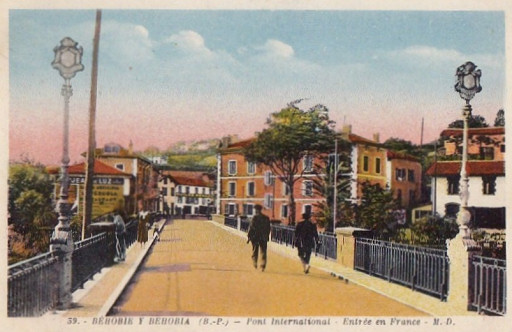 This old postcard shows them better. This old postcard shows them better.These posts still exist but apparently on its successor. |
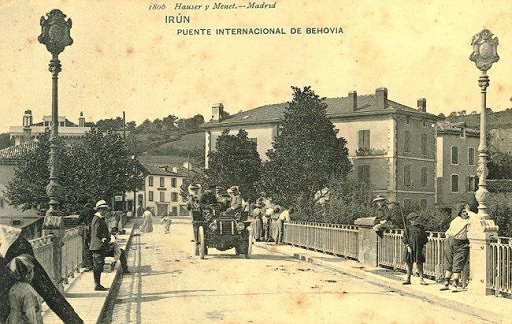 Another picture. Another picture. |
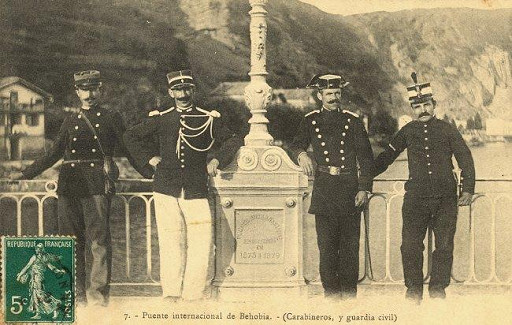 And on this one the foot more in detail. And on this one the foot more in detail. |
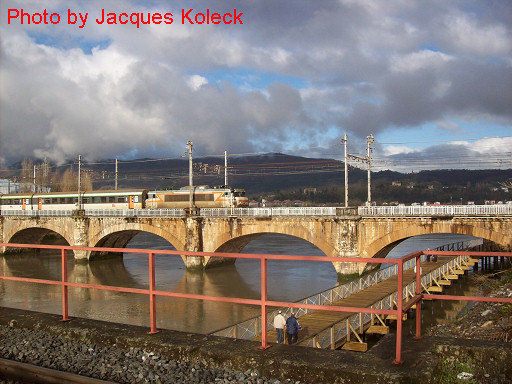 Nowaday there are more bridges crossing the Bidassoa. Nowaday there are more bridges crossing the Bidassoa. Jacques Koleck sent me a lot of photos of those bridges. At present there are 6 bridges. The one (nr 1) with the train is the most western one and is a railwaybridge for international trains. |
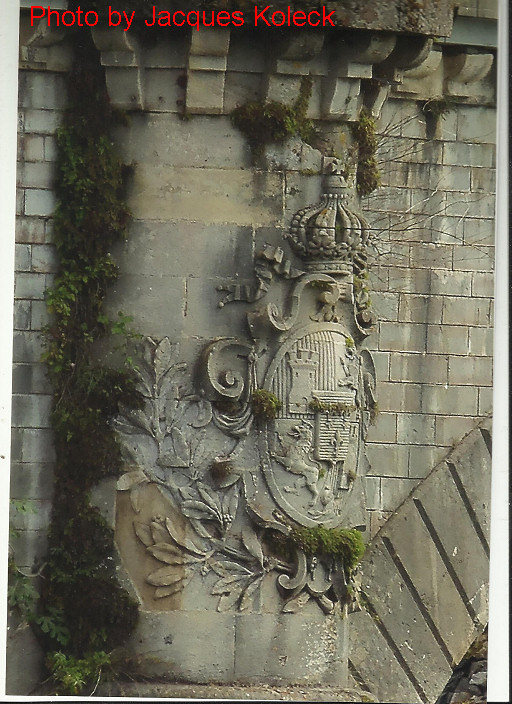 It contains beautiful sculptures like this Spanish blason. It contains beautiful sculptures like this Spanish blason. |
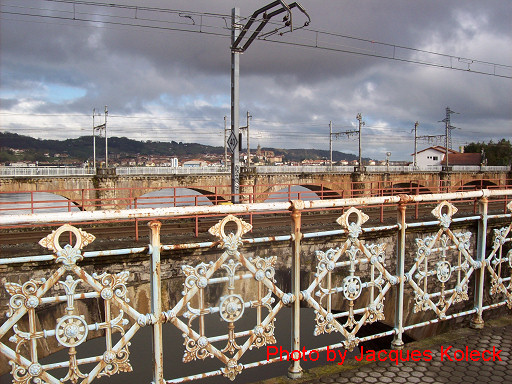 This picture is taken from the third bridge and shows the second and the first bridge. This picture is taken from the third bridge and shows the second and the first bridge.The second bridge is also a railway-bridge (one track) and is used by local trains. It's called: "pont du topo" |
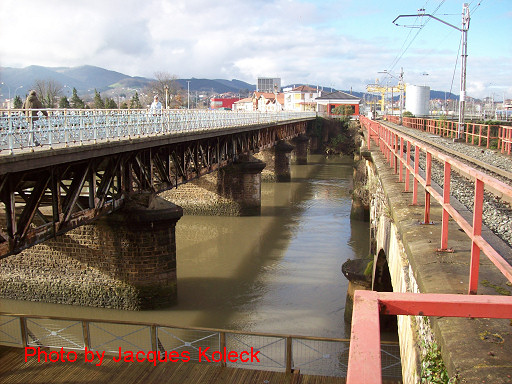 View of the second (right) and third (left) bridge. View of the second (right) and third (left) bridge. |
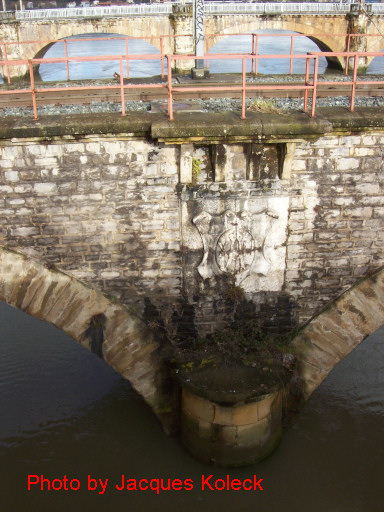 This is a pillar of the second bridge. This is a pillar of the second bridge.The 'weapon' contains: A XII ( = Alphonse XII, king of Spain) |
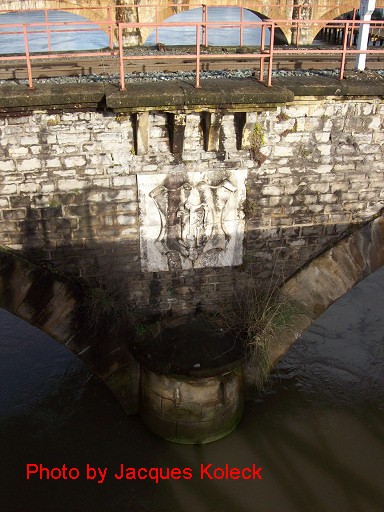 and this is another pillar of the second bridge. and this is another pillar of the second bridge. |
 On this zoom-in we can see the letters RF (République française) On this zoom-in we can see the letters RF (République française) |
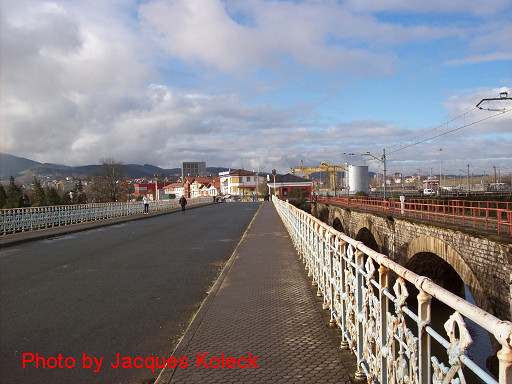 This is the third bridge, nowadays only for footpassengers. We're looking towards spain. This is the third bridge, nowadays only for footpassengers. We're looking towards spain.To the right we see: bridge nr. 2 |
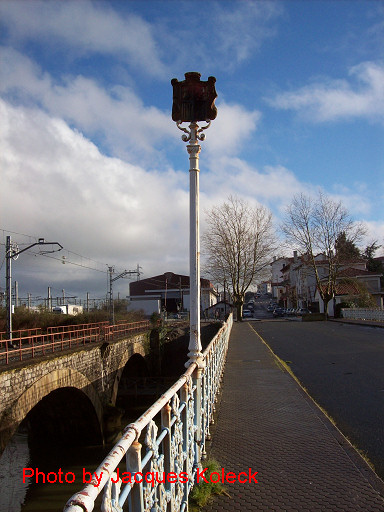 At bridge nr 3, we find back the old posts with the arms of France and Spain. We are looking towards France. At bridge nr 3, we find back the old posts with the arms of France and Spain. We are looking towards France.I think that this bridge is the successor of the original one from the old postcards. Javier Martínez Ruiz says that this one was constructed in 1916. Jacques Koleck proposes to call it the "Vieux pont Saint Jacques". |
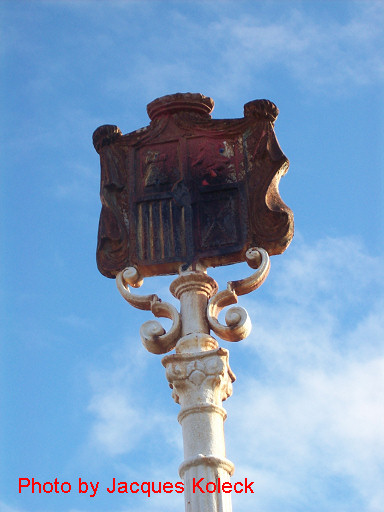 Zoom-in, it's a Spanish weapon. Zoom-in, it's a Spanish weapon. |
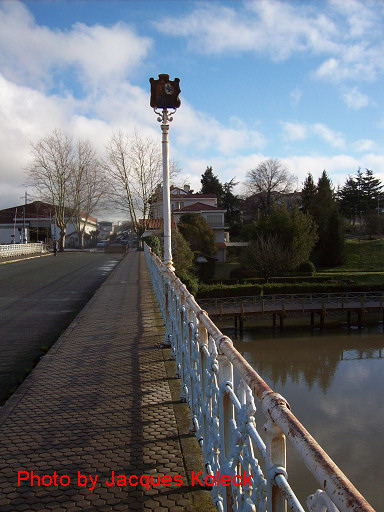 This is the second one (still looking towards France) This is the second one (still looking towards France) |
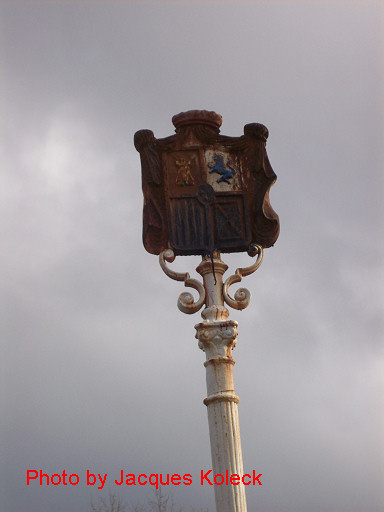 Zoomin of the Spanish weapon. Zoomin of the Spanish weapon. |
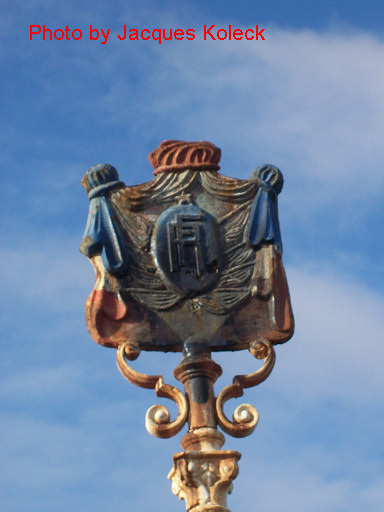 Close-up from the other side. Close-up from the other side.This is a French weapon: we can see the letters RF (République française) |
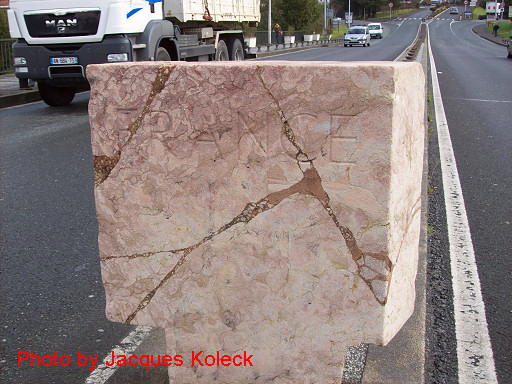 The fourth bridge is the broadest one. It was constructed in 1966 and is called: "pont de St Jacques". The fourth bridge is the broadest one. It was constructed in 1966 and is called: "pont de St Jacques". Jacques Koleck proposes: "Nouveau pont Saint Jacques" In the middle we find this bordermarker. |
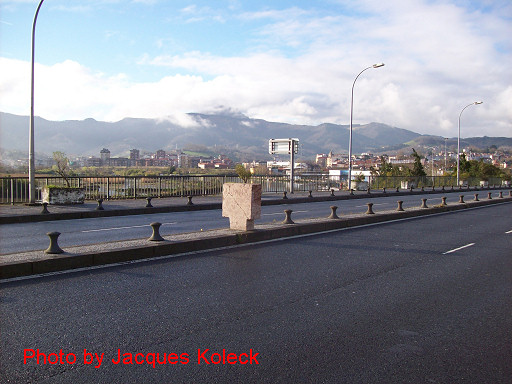 From some distance From some distance |
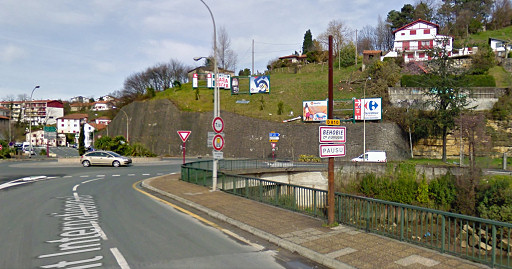 This is the fifth bridge ("pont de Behovia"), photo retrieved from Google Streetview. This is the fifth bridge ("pont de Behovia"), photo retrieved from Google Streetview. The rusty metal post seems atypical and might have been used for a some bordermarker-sign. |
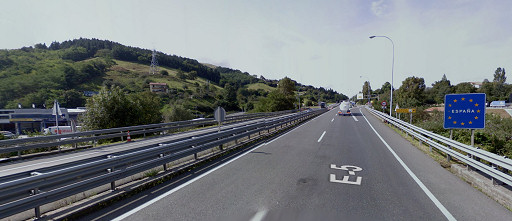 Finally, the sixth bridge: the motor-higway. Apart from traffic-signs, I couldn't spot any other bordermarker. Finally, the sixth bridge: the motor-higway. Apart from traffic-signs, I couldn't spot any other bordermarker. |
The bridge in Dantxaria |
 The bridge from some distance, looking into Spain. The bridge from some distance, looking into Spain. |
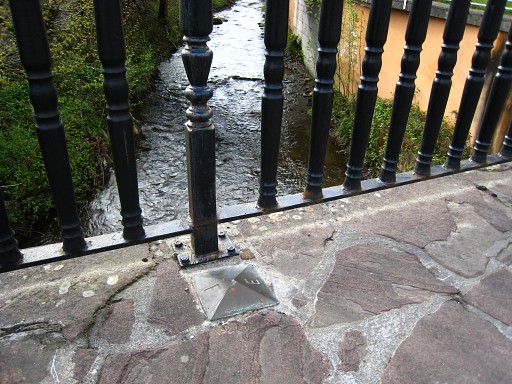 On the bridge in Dantxaria, these unnumbered markers. On the bridge in Dantxaria, these unnumbered markers. |
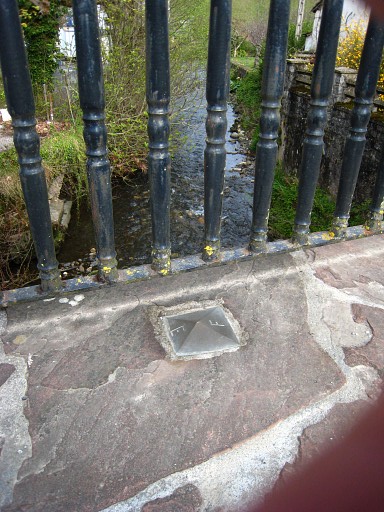 They are as such mentioned in the Procès-Verbal. They are as such mentioned in the Procès-Verbal. |
| The new "Pont du Roi"-bridge |
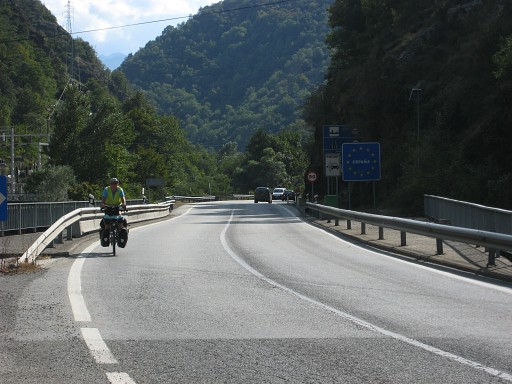 The old bridge is still there but this new one was build in xxxx and contains bordermarkers. The old bridge is still there but this new one was build in xxxx and contains bordermarkers. |
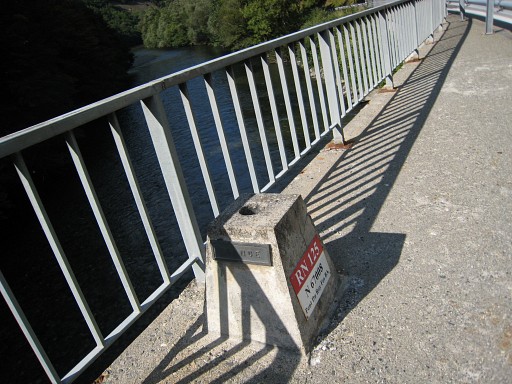 And these ones at the west-side. And these ones at the west-side. |
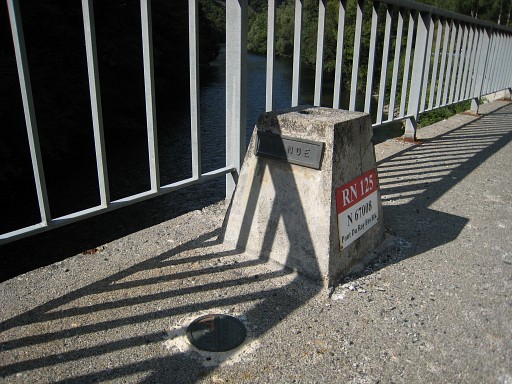 |
 |
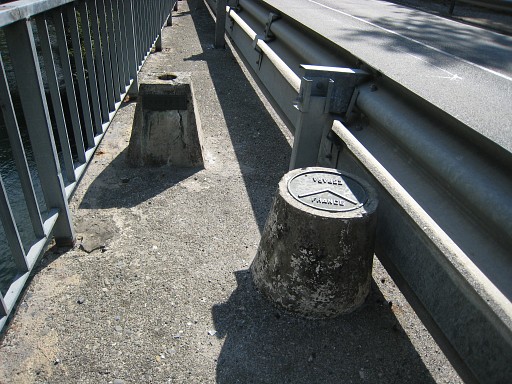 Then I first photograph the
(unnumbered) markers at the bridge, that is to say the new bridge, built around 1970. Then I first photograph the
(unnumbered) markers at the bridge, that is to say the new bridge, built around 1970.These ones are at the east side. |
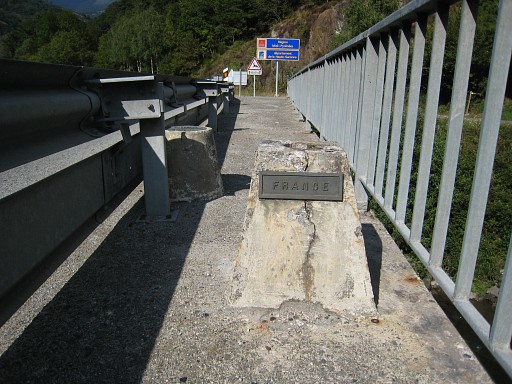 |
| The hew bridge between Puigcerda and Llivia |
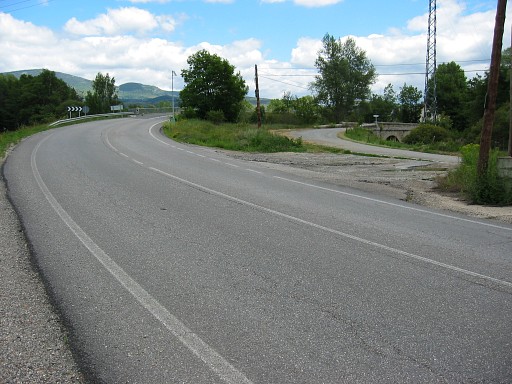 An overview of both bridges, to the right the old one. An overview of both bridges, to the right the old one. |
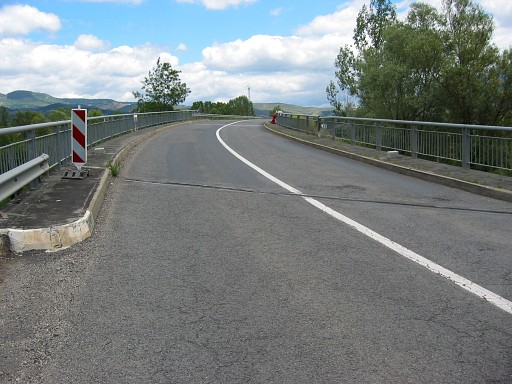 This is the new bridge. Notice the smal bordermarkers on both sides. This is the new bridge. Notice the smal bordermarkers on both sides. |
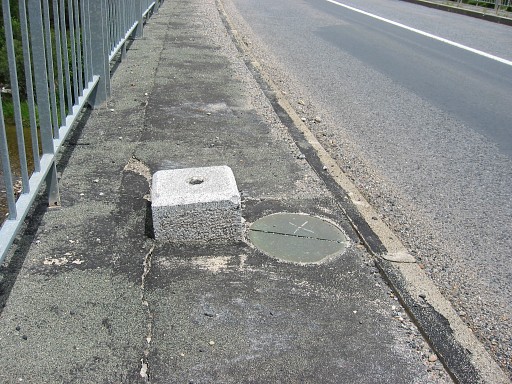 This is one of at north-side. This is one of at north-side. |
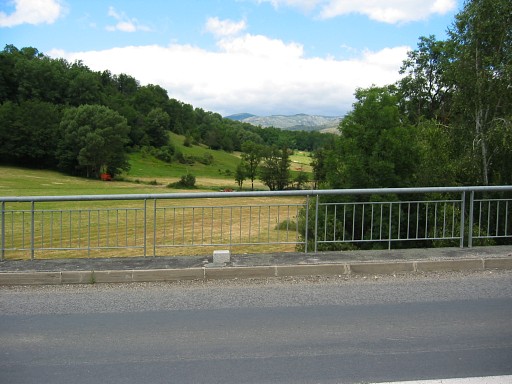 And this is the southern one And this is the southern one |
